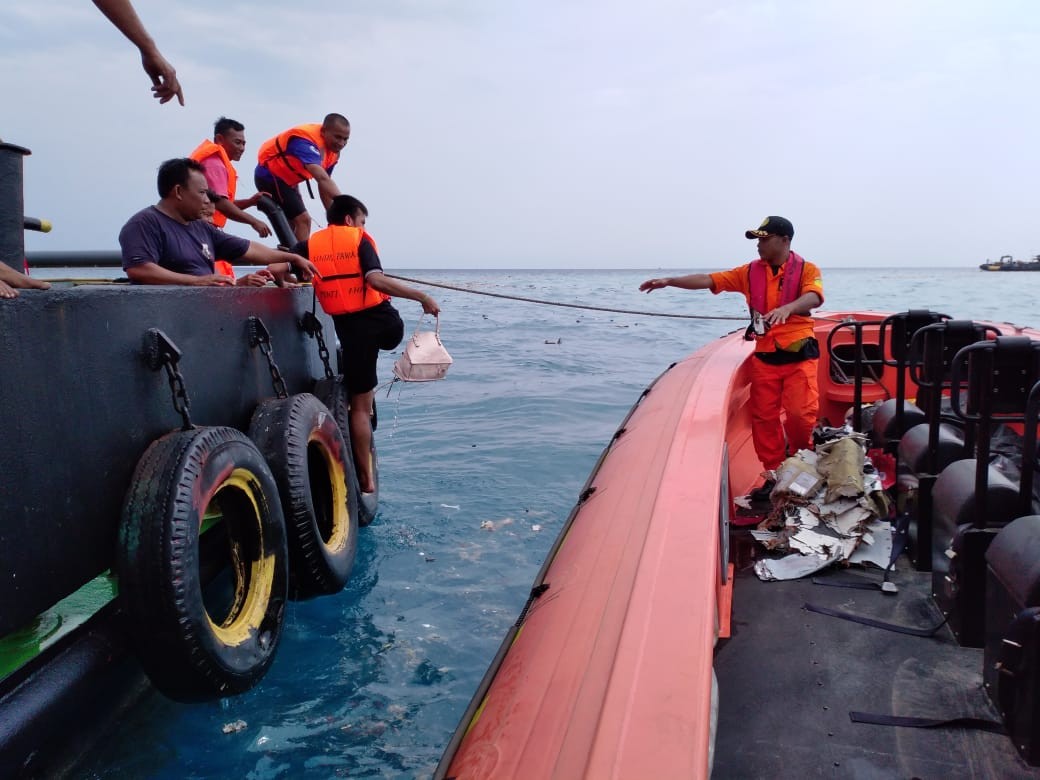Popular Reads
Top Results
Can't find what you're looking for?
View all search resultsPopular Reads
Top Results
Can't find what you're looking for?
View all search resultsLimited underwater visibility hampers search for flight JT610
Despite difficulties, authorities have vowed that the search and rescue operations would be thorough.
Change text size
Gift Premium Articles
to Anyone
T
he efforts by a joint team of search and rescue personnel to locate the black box and the fuselage of downed Lion Air flight JT610 in the Java Sea have been hampered by limited underwater visibility, authorities said.
Although the currents in the waters off Tanjung Karawang, West Java -- where the plane crashed with 189 people on board on Monday morning -- were not heavy, the team of divers faced some difficulties during the operations, an official with the National Transportation Safety Commission (KNKT) said.
"[Underwater] visibility is very restricted, which is why the process [of finding the black box] is taking quite some time," KNKT accident investigator Ony Suryo Wibowo said on Tuesday.
Some 50 divers, who are deployed to recover the debris and bodies from the Lion Air flight, could only work from early in the morning until late in the afternoon because the wind was too strong to go, Ony said.
Specialized equipment, such as robots, to detect the black box was deployed after nightfall and when the tide was high, he said. "But the limited visibility also makes it difficult for the equipment to detect anything," Ony added.
West Java Police chief Insp. Gen. Agung Budi Maryoto said the muddy waters made it hard for divers -- who are made up of police personnel, the National Search and Rescue Agency (Basarnas) and the Navy's special Frogmen squad (Kopaska) -- to see things clearly.
"The weather is clear and the waves are calm, however, the mud makes things a little bit difficult," Agung said as quoted by kompas.com.
As of Tuesday evening, authorities were still unable to retrieve the black box and locate the plane’s fuselage.
Basarnas said the plane, which went down en route from Jakarta to Pangkalpinang, Bangka Belitung Islands, crashed into the sea and was submerged at a depth of 30 to 35 meters.
Basarnas senior official Didi Hamzar said the difficulty in locating the plane was exacerbated by the fact that it had crashed at high speed and thus the location where the fuselage lay was hard to pinpoint.
Data from Flightradar24, a flight tracking system, showed that the plane fell from 4,825 feet in less than 25 seconds, with the velocity reaching 480 kilometers per hour.
"The assumption is that it was impossible [for the plane] to stay afloat, which would have happened had there been propulsion [into the water] because of engine pressure," Didi said as reported by kompas.com.
Despite the difficulties, authorities have vowed that the search and rescue operation would be thorough. On Wednesday, Basarnas expanded the search area to 15 nautical miles from the site where the plane is thought to have gone down from the previous 10 nautical miles on Tuesday and 5 nautical miles on Monday. (afr)










